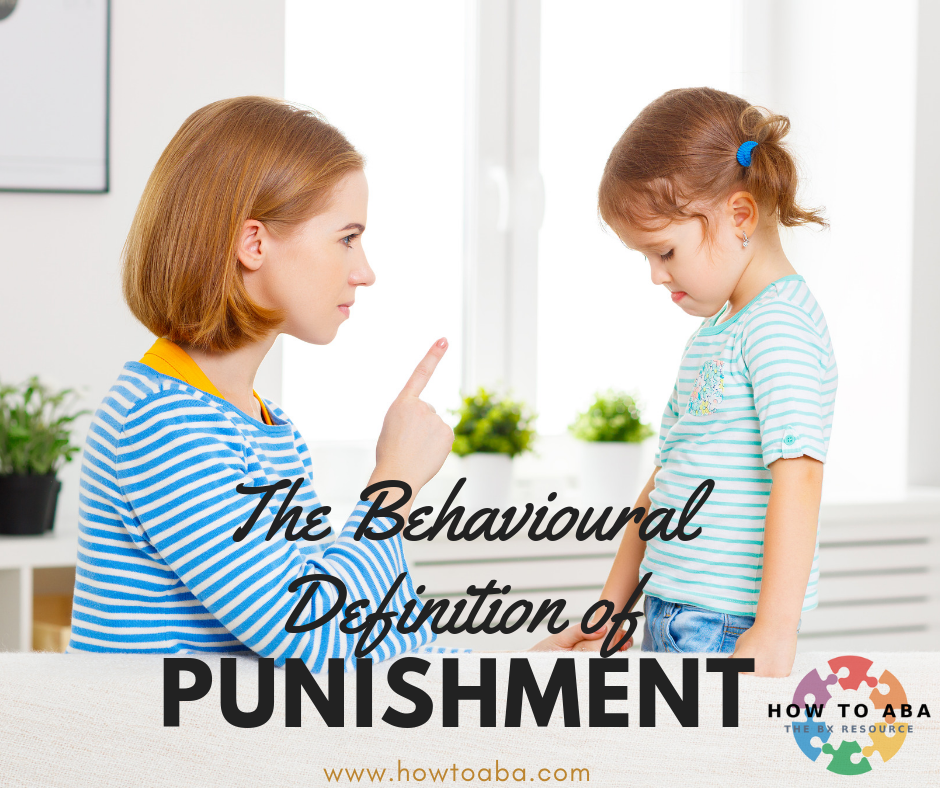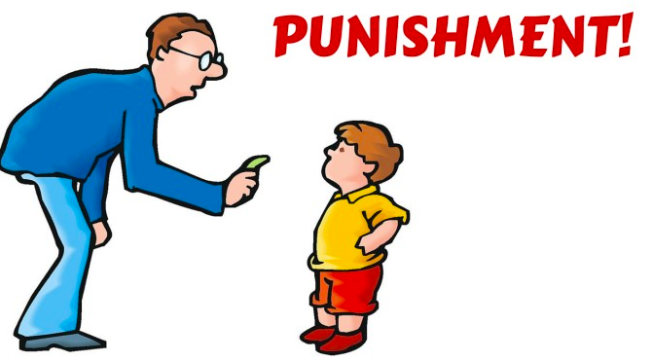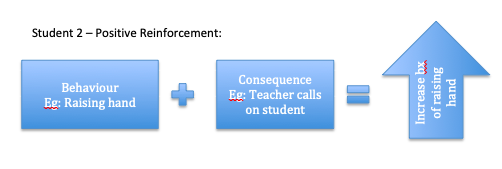
I recently sent an email to a client’s team with a line that read as follows: “All staff will continue to follow through with demands and deliver consequences (punishers and reinforcers) as applicable.” One of the team members took offence to the word “punisher” and was concerned that the approach wasn’t a positive one. I can assure you that there were MANY positive strategies being implemented to prevent and reduce problem behaviour. But when push comes to shove and the behaviour is manifested, the consequence that happens right after the behaviour MUST act as a punisher! Otherwise, the behaviour might be reinforced which means that it will happen again and again. Granted, maybe I shouldn’t have used that word in an email sent to the general team, but the negative connotation of the word “punishment” is wholly misunderstood. Let’s try to understand it better.
Definition of Punishment
Punishment = A consequence that happens after a behaviour that serves to REDUCE the likelihood of that behaviour happening again IN THE FUTURE.
This means that if every time I eat at a certain restaurant, I immediately get a stomach ache, the stomach ache is a punisher that is going to decrease the likelihood of me eating at the restaurant in the future.
Behaviour = eating at the restaurant
Punishment = stomach ache
It is only punishment if it decreases the behaviour.
It’s important to remember that an effective punisher may NOT act to end the behaviour RIGHT NOW, but the goal is to reduce the behaviour in the future.
Alternatively, there are many things that people use as “punishment” that aren’t really acting to punish (or decrease) the behaviour. For example, there are schools where teachers use a general consequence of missing recess for any undesirable behaviour that happens in the classroom. In the teacher’s mind, she may be trying to “punish” the undesirable behaviour by taking away recess. But in reality, she may not be decreasing the likelihood of that behaviour, and if that child doesn’t like recess, he is actually more likely to engage in that behaviour in the future!

Punishment Doesn’t Have to be “Bad”
The word punishment has negative connotations (hence, see example above), but what is actually happening doesn’t have to be “bad” or aversive. It just has to be something that the individual doesn’t want to experience again. Additionally, what’s punishment to one person might be reinforcement to another! For example, if a student likes being called on in class, then the teacher calling on that student will likely increase the student’s behaviour of raising her hand. However, if another student doesn’t like being called on in class, then the teacher calling on this student will likely decrease (or punish) the behaviour of the student raising her hand. The same behaviour and the same consequence can have different reactions for different people. The consequence is neither “bad” nor “good”, it’s just neutral.


Negative and Positive Punishment
These terms can be confusing because we associate the word “negative” with bad things and “positive” with good things. This is not the case when referring to behavioural principles. I’ve countlessly heard people mix up the terminology when referring to punishment (and reinforcement) so let’s clear this up:
Positive punishment: The ADDITION of something that acts to decrease the likelihood of a behaviour happening in the future.
Example: If money is tight for you, then getting a speeding ticket with a fine might act to reduce the likelihood of you speeding again in the future.
Negative Punishment: The REMOVAL of something that acts to decrease the likelihood of a behaviour happening again in the future.
Example: If the addition of a fine isn’t enough for you, then maybe removing your license will act to decrease the likelihood of speeding in the future.
In Conclusion
Punishment is not inherently a bad thing. Any treatment plan to reduce a behaviour should be accompanied by a positive system that increases replacement behaviours and focuses on reinforcement. However, any plan for addressing negative behaviour wouldn’t be complete without instructions for how to react to negative behaviours so that they are less likely to happen again. Also, I’ve learned that when addressing general team members, to leave out the technical terms that can be misunderstood!


Pingback: Punishment and Parenting: How to Use Effectively - How to ABA
Pingback: 8 Myths About ABA Therapy - ABA Centers of America